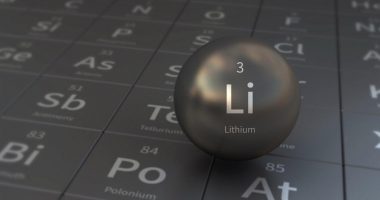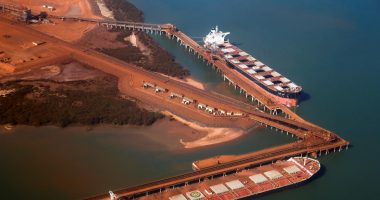- Alkane Resources (ALK) has released its report for the March quarter — most of which focused on its Tomingley Gold and Dubbo projects
- After restarting Tomingley underground operations in February, the mine is now steadily producing stoped ore
- During the quarter, a total 5,723 ounces of gold was poured, while Alkane generated $8.2 million from gold sales
- Importantly, after highly encouraging results from the Roswell and San Antonio prospects, Alkane is accelerating towards developing underground mines at both locations
- However, operating cashflows were significantly lower this quarter, due to maintenance closures and COVID-19 delays
- Positively, Alkane got the go-ahead from the ASX to transition from a mining exploration entity to a mining producing entity
- Furthermore, construction and development of Dubbo’s pilot plant continued and received financial support from Export Finance Australia
- Alkane Resources is down 2.68 per cent this morning and is trading for 72.5 cents each
Alkane Resources (ALK) has released its report for the March 2020 quarter — most of which focused on its Tomingley Gold and Dubbo projects.
Tomingley Gold Operations
The Tomingley Gold Operations (TGO) processing plant, which is solely owned by Alkane, is located approximately 50 kilometres southwest of Dubbo in New South Wales. The plant was commissioned in January 2014 and has been operating at a capacity of one million tonnes per annum since May that year.
The project’s processing plant underwent a maintenance period from December 2019 until February this year and is now processing underground stope material, with recovery going as Alkane expected.
During the quarter, a total 5,723 ounces of gold was poured at TGO. Alkane sold 3,864 ounces of gold at an average sales price of $2126 per ounce. This generated $8.2 million in revenue for the company.
Alkane also conducted an extensive 60,000-metre drilling program at the San Antonio and Roswell prospects within Tomingley. Results consistently returned significant gold grades, which even reached up to 60g/t gold.
After its completion in March, the company then began infill resource drilling at San Antonio, which consists of a further 50,000 metres.
The encouraging results from these programs led to Alkane liaising with stakeholders and regulators to enable future mine development in the area.
Now, Alkane is waiting for approval to develop an exploration drive, and is currently speeding up plans to create for both open-cut and underground mines beneath Roswell and San Antonio.
Before January’s close, the company unveiled a maiden inferred gold resource for the Roswell prospect, which outlined 7.02 million tonnes grading 1.97g/t gold for 445,000 ounces. Further drilling was conducted during the quarter to increase confidence before converting this to an indicated status.
Recently, the company calculated the inferred mineral resource for San Antonio, which sits at 7.92 million tonnes grading 1.78g/t gold for 453,000 ounces. Drilling is also continuing at this prospect to define the continuity of mineralisation.
Alkane now has four deposits at TGO which hold more than one million ounces of contained gold.
Corporate
For the March quarter, Alkane’s cash, bullion and listed investments position totalled $81.9 million.
Operating cashflow sat at just $0.3 million, which reflects lower production from Tomingley as a result of maintenance closures over two months.
Despite production being on the lower end of the spectrum, Alkane closed the quarter with a number of forward sale contracts to deliver 22,110 ounces through to June 2021.
Positively, Alkane has also been given the go-ahead by the ASX to change its listed classification from a ‘mining exploration entity’ to a ‘mining producing entity’ as defined in Listing Rule 19.12.
Following this, Alkane will only need to report financial data every six months, rather than lodging Appendix 5B quarterly cashflow reports four times a year.
Dubbo Project
Alkane’s Dubbo Project is a long-life polymetallic project with large in-ground zirconium, hafnium, niobium, yttrium resources, as well as rare earth elements.
It remains construction-ready, with the mineral deposit and surrounding land wholly-owned by Alkane, all material State and Federal approvals in place, and an established flowsheet.
Last year, Alkane’s subsidiary, Australian Strategic Materials (ASM), entered a joint venture with Zircon Technology. Zircon is a South Korean company who is constructing a clean metals pilot plant to convert Dubbo Project metals to high purity metals.
The push for this operation stems from the metals industry being responsible for roughly 40 per cent of greenhouse gas emissions, which has led more companies to shift towards clean and sustainable practices.
Progress continued during the quarter, with the construction and installation of equipment for the clean metals pilot plant in Daejeon, South Korea.
Due to COVID-19, however, the project experienced minor disruptions and the pilot plant is now due for completion by the end of the current quarter.
“ASM believes the production of metals from this new green technology will be a catalyst for further discussions and development with potential strategic partners,” the announcement stated.
Alkane also says the Dubbo Project closely aligns with the recently announced initiative by the Australian Government to develop its ‘Critical Minerals’ sector.
In early March, Export Finance Australia confirmed it would financially support the development of the Dubbo Project and will work closely with ASM.
COVID-19
As a result of COVID-19, zirconium and rare earth materials prices were flat or lower due to a decreased demand from end-users. The exceptions are dysprosium and terbium, which are important magnet rare earth elements, where restricted supply of raw materials resulted in increased prices. Prices for hafnium and niobium, however, remained stable.
The virus has caused significant supply disruptions due to the closure or restricted operation of companies. Older facilities with more employees are particularly vulnerable, compared to newer factories with greater levels of automation which require less people.
Closures or restrictions have also impacted ports and internal transport in many countries, as well as shipping companies which have chosen to avoid some countries altogether. This has sometimes meant that shipping containers have not been returned to their original port, which has created a shortage of shipping containers.
Overall, this has led to significant increases in logistics times and costs, as goods take significantly longer to be produced and delivered to customers.
Looking beyond the pandemic, Alkane says it remains committed to the demerger of its ASM subsidiary. It already operates as a separate entity with its own budget and resources. Currently, management is working towards an official listing on the ASX in the third quarter of 2020.
Alkane Resources is down 2.68 per cent this morning and is trading for 72.5 cents each at 10:58 am AEST.






